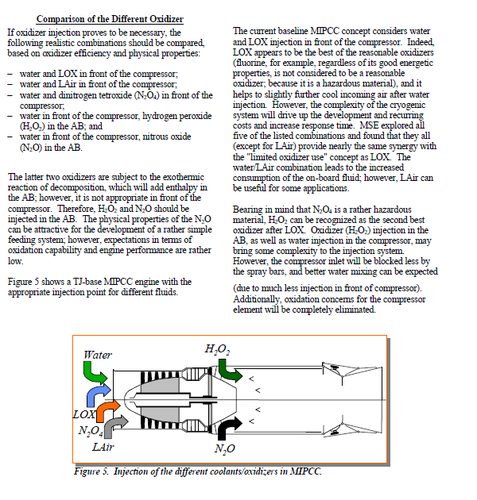You guys are great, really.
this morning I made an interesting exercise. Related to "carrier aircraft / airbreathing engine speed" vs "delta-v gain"
because, you see, the two are not proportional nor linear.
Let's take the case of Skylon. The airbreathing engines push rocket ignition to Mach 5.5. ok, then how much delta-v to orbit GAIN is mach 5.5 ?
Mach 5.5 is 1.87 km/s.
Now follow my reasonning: Clapp says going to Mach 5.5, airbreathing, lowered the delta-v to orbit to 20700 ft/s. Which is 6.3 km/s. From 9.3 km/s, that's a delta-v gain of 3 km/s. Problem: Skylon was supposed to gain only 1.87 km/s, not 3 km/s !
so the cool news is that the delta-v gain from carrier / airbreathing, grows faster than the carrier / airbreathing own speed.
In clear english: launch from a Mach 0.95 carrier provides a delta-v boost of much more than Mach 0.95. Well, here comes (again) Marti Sarigul Klinj
Mach 0.95 carrier brings +1100 m/s bonus on the way to Earth orbit (8.1 km/s left - from a ticket of 9.2 km/s, average)
Mach 2 carrier brings+1600 m/s bonus (so 7.6 km/s left)
Mach 3 carrier brings + 2000 m/s bonus (so 7.2 km/s left)
And we could add Burnside Clapp and Skylon coinciding results
Mach 5.5 = 1.87 km/s brings +3 km/s bonus (so 6.2 km/s left)
What is sure is
- Subsonic, supersonic, and low hypersonic represents three very different flight regimes, harder and harder.
- Meanwhile the rocket equation has a logarithm so it is non linear, too, just like the different mach regimes.
The basic rule is: the deeper into hypersonic, the harder, while the rocket equation non-linear nature just watch you heating the heat barrier, smiling.
High speed flight is as unforgiving as is the rocket equation.

this morning I made an interesting exercise. Related to "carrier aircraft / airbreathing engine speed" vs "delta-v gain"
because, you see, the two are not proportional nor linear.
Let's take the case of Skylon. The airbreathing engines push rocket ignition to Mach 5.5. ok, then how much delta-v to orbit GAIN is mach 5.5 ?
Mach 5.5 is 1.87 km/s.
Now follow my reasonning: Clapp says going to Mach 5.5, airbreathing, lowered the delta-v to orbit to 20700 ft/s. Which is 6.3 km/s. From 9.3 km/s, that's a delta-v gain of 3 km/s. Problem: Skylon was supposed to gain only 1.87 km/s, not 3 km/s !
so the cool news is that the delta-v gain from carrier / airbreathing, grows faster than the carrier / airbreathing own speed.
In clear english: launch from a Mach 0.95 carrier provides a delta-v boost of much more than Mach 0.95. Well, here comes (again) Marti Sarigul Klinj
Mach 0.95 carrier brings +1100 m/s bonus on the way to Earth orbit (8.1 km/s left - from a ticket of 9.2 km/s, average)
Mach 2 carrier brings+1600 m/s bonus (so 7.6 km/s left)
Mach 3 carrier brings + 2000 m/s bonus (so 7.2 km/s left)
And we could add Burnside Clapp and Skylon coinciding results
Mach 5.5 = 1.87 km/s brings +3 km/s bonus (so 6.2 km/s left)
What is sure is
- Subsonic, supersonic, and low hypersonic represents three very different flight regimes, harder and harder.
- Meanwhile the rocket equation has a logarithm so it is non linear, too, just like the different mach regimes.
The basic rule is: the deeper into hypersonic, the harder, while the rocket equation non-linear nature just watch you heating the heat barrier, smiling.
High speed flight is as unforgiving as is the rocket equation.

Last edited:

